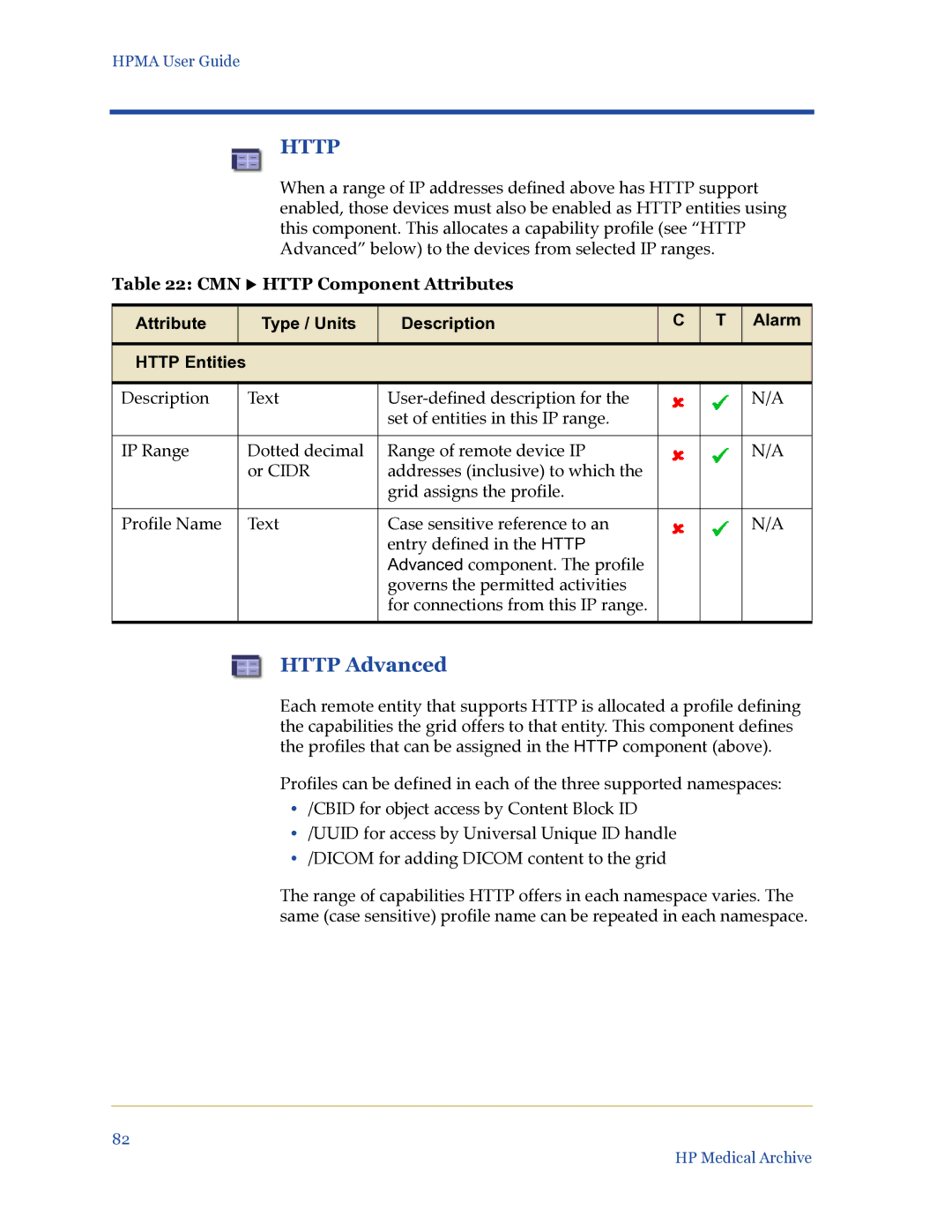
HPMA User Guide
HTTP
When a range of IP addresses defined above has HTTP support enabled, those devices must also be enabled as HTTP entities using this component. This allocates a capability profile (see “HTTP Advanced” below) to the devices from selected IP ranges.
Table 22: CMN X HTTP Component Attributes
Attribute |
| Type / Units | Description | C | T | Alarm |
|
|
|
|
|
|
|
HTTP Entities |
|
|
|
|
| |
|
|
|
|
|
|
|
Description |
| Text |
|
| N/A | |
|
|
| set of entities in this IP range. |
|
|
|
|
|
|
|
|
|
|
IP Range |
| Dotted decimal | Range of remote device IP |
|
| N/A |
|
| or CIDR | addresses (inclusive) to which the |
|
|
|
|
|
| grid assigns the profile. |
|
|
|
|
|
|
|
|
|
|
Profile Name |
| Text | Case sensitive reference to an |
|
| N/A |
|
|
| entry defined in the HTTP |
|
|
|
|
|
| Advanced component. The profile |
|
|
|
|
|
| governs the permitted activities |
|
|
|
|
|
| for connections from this IP range. |
|
|
|
|
|
|
|
|
|
|
HTTP Advanced
Each remote entity that supports HTTP is allocated a profile defining the capabilities the grid offers to that entity. This component defines the profiles that can be assigned in the HTTP component (above).
Profiles can be defined in each of the three supported namespaces:
•/CBID for object access by Content Block ID
•/UUID for access by Universal Unique ID handle
•/DICOM for adding DICOM content to the grid
The range of capabilities HTTP offers in each namespace varies. The same (case sensitive) profile name can be repeated in each namespace.
82
HP Medical Archive
